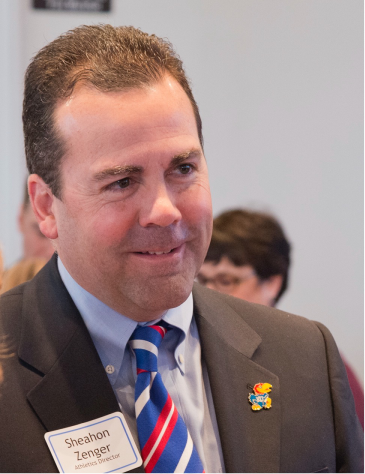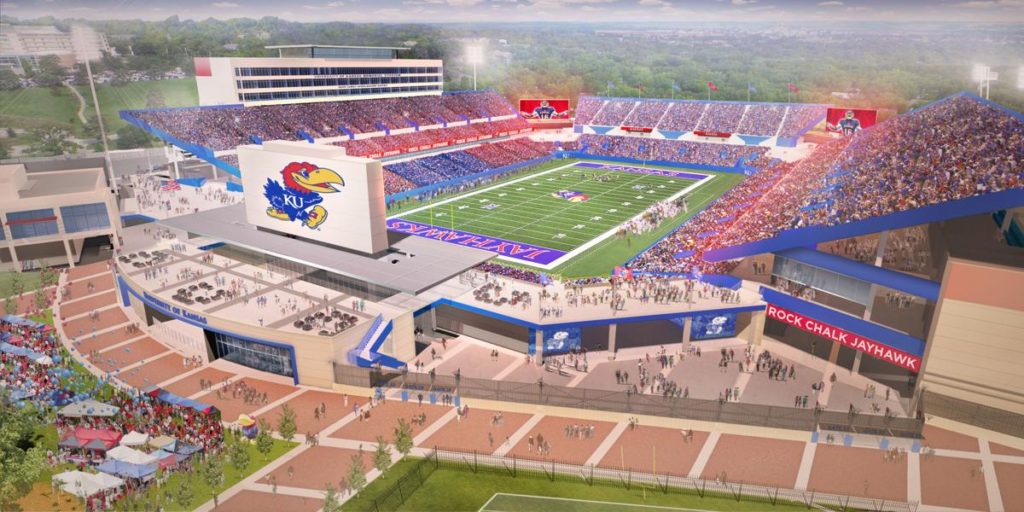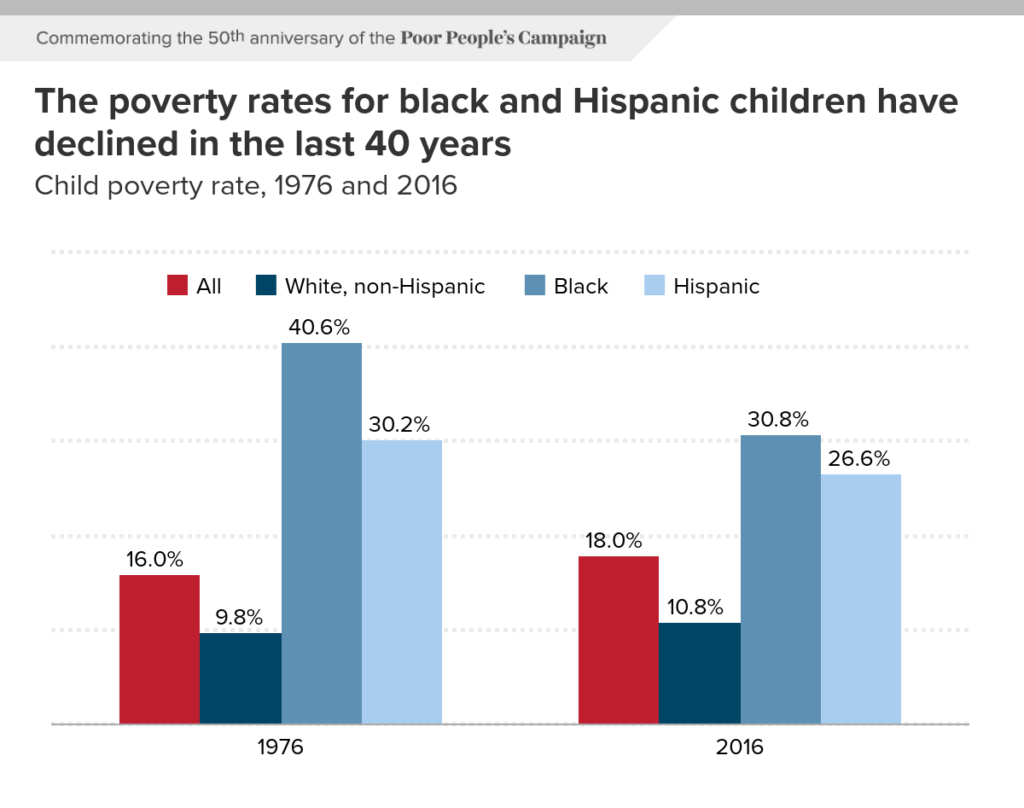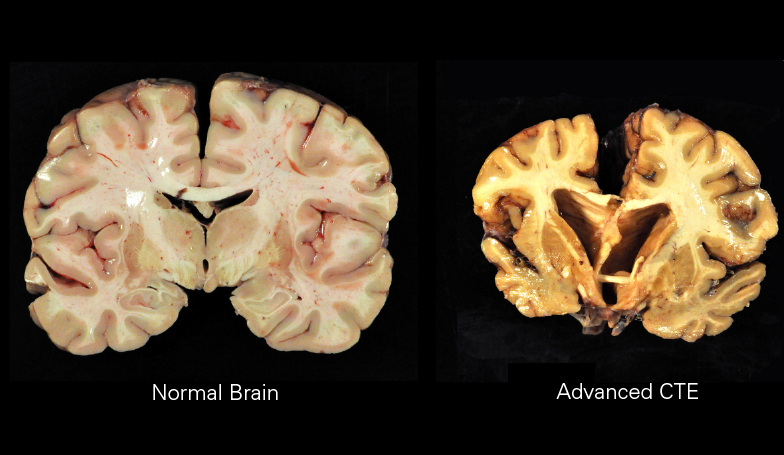Ethics of College Football Funding: The Case of The University of Kansas
By: Brock Stobbs
In late 2017, the University of Kansas (KU) announced its decision to undertake a five-year-long fundraising scheme which would privately raise $350 million to improve athletic facilities, with a specific focus on its football stadium (Galloway). This decision comes amidst a difficult financial time for universities. Across the sector, universities are embarking on cost-cutting initiatives to remain viable and profitable. With the toll football takes on athletes’ bodies becoming more evident, the critical ethical issues of U.S. college football programs require examination. Beyond the fiscal narrative, there are considerations about the obligations universities have to all their students, the inconsistencies in financial decision-making, and the exploitative nature of student athletics.
The Purpose of Universities
The role of universities is dictated by various imperatives that often contradict and compete. When KU Chancellor Douglas Girod and the now former Director of Athletics Sheahon Zenger announced their five-year campaign, they were trying to keep up with their fellow ‘Big 12’ members (The Kansas City Star Editorial Board). By investing heavily in such facilities, they wanted to overcome problems they were facing regarding the recruitment of student-athletes and maintaining their athletic roster (Galloway). It will be tough for KU to keep up with fellow Big 12 members[1]as they are already vastly ahead in terms of investment in their football teams and programs (The Kansas City Star Editorial Board). Texas and Oklahoma are purported to be within the top 3 overall teams in terms of worth, and both exceed the billion-dollar mark (Fischer).

University of Kansas Chancellor Doug Girod 
Former Director of Athletics Sheahon Zenger
To stay competitive with Big 12 athletics is not the purpose of KU. The primary mission of KU, as stated in its mission statement, includes a commitment to “first [serve] Kansas, then the nation, and the world through research, teaching, and the preservation and dissemination of knowledge” (The Kansas Board of Regents). The four cornerstones of KU’s mission are “instruction, research, service and international dimension,” all of which pertain almost exclusively to education and not athletics (The Kansas Board of Regents). This mission has historical roots as universities are institutions of higher learning and exist to educate people beyond the schooling they are required to receive via federal and state law. However, through the prioritization of funding for certain athletics facilities and programs as opposed to academic services, serving students through academia appears not to be the primary moral imperative that drives the institution.
Instead, we argue it is profit that drives KU’s operations, as profit does with many other universities across the world. This shift from a public-focus to private-focus is not new as for-profit universities are becoming more established and prominent, even more so with the trend of privatization taking over. KU’s position as a state university does not make it immune to this fiscal imperative either. While it may receive funding from the state for its operations, this immense fundraising scheme is distinctly private (The Kansas City Star Editorial Board), a reality that is likely due to the difficulty in justifying investing tuition dollars in athletics facilities to a board bound by the mission statement.
Social Contract
This desire for profit can come in contrast with Jean-Jacques Rousseau’s ‘voice of duty.’ Explained in the Social Contract (1762), it stipulates that once people establish civilized relations, they would abandon self-centered ideals and favor rules that benefit everyone (Rachels and Rachels). The ‘voice of duty’ drives the social contract. It is an internal development that requires individuals to “set aside [their] self-centered designs in favor of rules that benefit everyone” (Rachels and Rachels). We make a conscious decision to operate within a new framework of rules and values to maximize or merely improve the utility of everyone (Rachels and Rachels). KU, while an institution, is comprised and managed by individuals, who should in theory be subject to the voice of duty.
The role of the social contract can compare to KU’s mission statement. They both serve as agreements, the former unspoken, the latter documented, of what we should owe each other as a community of society. Through becoming a society, we enter civilized relations and thus should adhere to the voice of duty (Rachels and Rachels). Through a university, we enter into a more commercial contract, but there are still similar principles that premise this contract; to serve the world through “research, teaching, and the preservation and dissemination of knowledge” (The Kansas Board of Regents). KU is a public university which serves as a contrast to for-profit universities. It does not exist to acquire profit for shareholders, but the public interest as dictated by their mission statement. Earning profit can be a part of this, but it should be gained to bolster its services and facilities.
Purpose of the Investment Scheme
The investment scheme’s primary goal has already been established to stay competitive with fellow Big 12 members (The Kansas City Star Editorial Board). But being competitive can mean many things in this case. When Girod and Sheahon say competitive, they mean a measure of athletic performance. Girod and Sheahon want to improve the facilities of the football program in particular to improve their athletes’ performances within the Big 12 conference. Sheahon is specifically noting that “KU aims to be in the top four of the Big 12 Conference in spending and revenue” (Kansas City Business Journals). KU’s football team, the Jayhawks, has a less than stellar record (M. Brown). The Jayhawks have consistently failed to place at a significant position with few exceptions that some commentators quickly link to other externalities as opposed to an improvement in skill or performance (Goble). Poor performance has even led some to question if the existence of KU’s football program is viable in the current fiscal environment (M. Brown).
Girod and Sheahon justify investing in football facilities by linking better facilities to improvements in performance. But there is a case to be made that even with renovations, the Jayhawks will still perform poorly. Multiple renovations to football facilities have occurred in recent years with a $31 million football complex in 2008 and a $34 million renovation to the Memorial Stadium in 2014 which both have not led to much improvement in performance (Goble). These expenditures accompany the frequent turnover of athletics directors and coaches that have failed to improve the performance levels of the football team, often costing KU significant amounts of money that have not produced the results it hoped to achieve. It was reported that Zenger had been relieved of his duties in May 2018, without cause, which resulted in him receiving two years of his $700,000 salary and health insurance premiums (Barnett). Ultimately, this cost KU $1,419,309 (Barnett).
Ethics and Economics of KU Football
Competitive athletic performance is the goal because of its link to the financial returns of the program. College football is a successful money earner for many universities, KU included. But given the many missteps by KU’s administration, it has been a costly endeavour. Due to its already weak position, it would require further investment to overcome the challenges and become competitive to the level administrators hoped (Goble). However, when looking at the specific financial returns gained via the football programs, the returns fail to compare with competitors.
Athletic revenue for KU was measured in 2014 as being $97 million, with only $23 million coming from football. Basketball was a close competitor, bringing in $18 million. KU manages to be ranked fifth in revenue in the Big 12 but is unable to compare with top competitors like the University of Texas, which earns $161 million in revenue, $112.5 million of which comes from football (Goble). Athletic revenue overall has seen an increase of 68% since 2006, butexpenses have seen a 93% increase within the same period (Lawhorn, A look at the finances of Kansas Athletics: Rising revenues, soaring costs, big bets).
Revenue is an essential factor in the decision to invest in football facilities as revenue levels directly impact profit. Profit is a financial imperative that is at the center of many American industries, universities apparently, being no different. Economic profit can be used to enrich those who manage the enterprise or injected back into the enterprise to improve it. For a university, this would be upgrading its services and facilities. The $350 million investment scheme is an attempt to enhance athletics facilities, primarily football, to stay competitive with other universities with which it is culturally linked (the Big 12). This is likely a futile task as we have seen with the disparity in funding levels.
Football’s contribution to revenue is also precarious as it primarily relies on external relationships from ‘Conference Distributions’ and ‘Media Rights,’ something that can be impacted by the Jayhawks’ poor performance. Ticket sales for Men’s Football are recording as being roughly $4 million, $3.4 million and $4 million in 2016, 2017 and 2018 financial periods (University of Kansas Athletics). Men’s Basketball, by contrast, was $14.9 million, $15.1 million and $15.9 million (University of Kansas Athletics). While total operating revenues for Men’s Football may be higher, Men’s Basketball is more self-sufficient with most of its revenue coming from ticket sales. Ticket sales are a minor contributor to Men’s Football (University of Kansas Athletics). Without the cultural importance football has, it would be an unwise investment. If a different sport like Men’s Basketball was held with the same cultural regard as football; it would likely earn more. KU’s Men’s Basketball is essentially the saving grace of the athletics department, making up for losses in certain areas purely on its stamina without external revenue sources (Lawhorn, KU basketball saves athletic department budget, allows leaders to dream of ‘blue sky potential’). Other teams earn negligible amounts in comparison to these two teams but without even minor investment could increase their total operating revenues significantly.
The drive for profit is wholly an objective of American capitalism that captivates much of the Western world. KU seems to have forgotten its mission and has instead been captured by neoclassical economics. Profit is not innately unethical. It comes down to how the profit is made, the purpose for which the profit is gained and how it is then directed. Little is known about KU’s intention for financial benefits gained from renovations and Girod does not offer much on this matter either.
An inconsequential statement of “a competitive football program benefits the entire university” remark is all we have on this matter (Associated Press). Assumptions could be made about the benefits from these renovations, that the supposed profits earned will be spread amongst KU’s other services. But football is not the profit-earning endeavor for KU that it is for other universities. Especially considering Kansas Athletics’ only real source of income is donors, earning a profit significant enough to be able to invest in other university facilities will be difficult (Lawhorn, A look at the finances of Kansas Athletics: Rising revenues, soaring costs, big bets). Without any confirmation or evidence of how any profits would be utilized, the assumption of redistribution of profits is unwarranted.
KU is not making a decision that benefits all the stakeholders in the university. Athletes and students are not getting the best out of the administration’s decisions, aside from football players, and that is only through the narrow lens of funds directed their way. There exist other factors that make investing in football facilities not in the mutual interest of football players. The desire by KU to improve its football facilities is thus far not driven by the voice of duty but the cultural eminence of football. KU is focusing on football because the college football culture promotes these types of decisions, with competition at its core.

Ethics Analysis
Duty to Students
KU as an institution is committed to education in theory, but in practice, we see actions that directly contradict this notion and dispel the idea that it is adhering to the social contract or the core derivative of it. In late 2018, KU announced it intends to cut more than 150 positions to reduce costs (Collins). Cost-cutting is a continuation of the profit-driven imperative which institutions like KU are following as the motivation behind the decision was to cut $20 million from its budget (Collins). Twenty million is only a fraction of the $350 million intended for the athletics facilities’ fundraising effort. Fifty-five faculty positions and 100 staff positions are to be eliminated over the next two school years, severely hindering KU’s ability to deliver its side of the contract made with students, to provide them with the best education KU can (The Associated Press).
It is difficult to imagine how cutting back on the amount of faculty and staff at the university will aid students in making the most of their experience at KU and receiving a quality education. The interest of this decision is the self, in this case, the university as an institution and those who operate it. The losses in faculty being made up for with the use of non-faculty lecturers only enforces this notion. The necessity of these lower-paid, temporary lecturer positions is self-evident, as they are easily dissolved positions and the university could and would dispense with them if they were not strictly necessary to deliver education to the students. However, they remain. More importantly, these lecturer positions are being filled at a time when enrollments to KU are increasing. Academic year 2017 become the fourth year in a row that KU saw increased enrollments (Monaco). Increased demand for KU services meets decreased supply, due to the efforts to cut costs academically while funds are diverted and invested in various other areas of university operations. This suggests that KU is, in effect, reneging on its contract with the students to provide quality education in the pursuit of maximizing profits.
Academic staff are seen as non-essential to the running of the university, despite them being central to the university fulfilling its mission statement (The Kansas Board of Regents). In contrast, this cost-cutting initiative occurs at the same time as administrative salaries are high. Interim Provost Carl Lejuez defended this disparity saying KU needs to ensure “administrative pay remains competitive” (The Associated Press). Academic salaries are not given the same precedence despite their critical nature. Academia is central to universities as, at the core, universities are institutions of learning. Competitive academic salaries are necessary for universities to fulfill obligations, such as those KU included in its mission statement (The Kansas Board of Regents).
Again, we see KU making a decision that contrasts with the voice of duty and the social contract. Despite its obligations to students and staff as a provider of education and as an employer, it is abandoning the principles of mutual benefit, this time in an effort to achieve a favorable financial position. In a fairer financial scheme, fundraising efforts could be directed towards academic facilities and services, as the primary purpose of KU, instead of towards football.
Exploitation of Athletes
College football is premised on the exploitation of athletes’ labor and bodies. College football players serve as instruments for universities to secure their profits through the lack of compensation for their labor and disregard for the health risks associated with football.
Labor Exploitation
College athletes often get recruited through scouting and scholarships, predicated on their involvement in sports to continue enrollment at a university. Once recruited, these athletes are subject to similar forces as qualifications are essential for future employment prospects, but also their participation in college sports is necessary for advancement into sporting employment after university. They must also play and achieve at normal levels to sustain this dynamic. College sport is a billion-dollar industry that exists within a more massive sporting complex, an industry dominated by self-interest as college athletes are unpaid (Hanson and Savage).
Their ‘payment’ is their scholarship, the funding they receive to attend university, accommodation and other living expenses, all of which are likely beyond their financial capacities without a scholarship. It is then easy to exploit college athletes and have them play for free as the potential benefits for them vastly outweigh the possible income they could earn through their sport. Some argue that college sports programs are not meant to make a profit, yet we have seen that they do (Hanson and Savage). College sports make money, football especially, even if some universities make minor profits. Profit is made while athletes are risking their bodies and are subject to various forms of injuries, all without compensation (McGregor) (Abdul-Jabbar).
It could be stated that this fulfills the social contract, as both parties benefit (Rachels and Rachels). However, these parties do not come in the contract on equal terms, and through the comparison of outcomes, universities come out better than athletes. Athletes go into the agreement from a disadvantaged position, where to achieve the type of success and living standard offered by these scholarships are only achievable through scholarships. They become locked out of most other avenues of achievement due to externalities that impact their lives. To then invest so heavily in their athletics facilities, primarily football, KU is endorsing the system of exploitation upon which college sports rely.
Various studies show that college athletes, particularly football players, are African American. Economic reality shows that despite child poverty decreasing over the years, African American children still experience the highest levels of poverty in the U.S., with 30.8% in 2016 living in poverty (Wilson, Valerie; Schieder, Jessica). Student-athletes, particularly those of color, are more likely to come from economically disadvantaged backgrounds (Wilson, Valerie; Schieder, Jessica). Those who are from financially disadvantaged backgrounds come from working class and lower-middle-class families where university education is not fiscally feasible. This makes avenues like college sporting scholarships one of the few economically viable ways people can get into universities. Coupled with universities being critical to one’s employment, this system exploits disadvantaged individuals, their labor and their bodies to produce a profit. While the individuals may benefit themselves financially, the exploitation of their bodies can have a dangerous impact as shown by the phenomenon of CTE.

Source: Economic Policy Institute
Chronic Traumatic Encephalopathy
Chronic Traumatic Encephalopathy, or CTE, is a neurodegenerative disease that is the result of sustaining repeated head injuries. CTE has gained prominence due to the increased awareness of its existence among football players and the devastating effects it can have. Boston University researchers discovered in a study of the 202 former football players’ brains tested, 87% of them tested positive for CTE as announced in 2017 (Mez, Daneshvar and Kiernan). The same study published by the Journal of the American Medical Association found similar results with a sample of 111 former NFL football players’ brains tested, 110 had CTE (Mez, Daneshvar and Kiernan). Testing for CTE can only be performed on bodies post-mortem, creating difficulty in researchers’ ability to study the disease and meaning that the condition can go undetected in players until death (Mez, Daneshvar and Kiernan).
The link between CTE and one’s physical health is still difficult to pinpoint with any certainty, but there exists an alarming connection between CTE and football players’ various levels of health decline. Some football players who were shown to have CTE post-mortem had committed suicide (Wilner) (Piellucci) (Belson) (Delsohn) (Duke and Carter). Others have suffered from severe headaches, seizures and many other ailments (Kounang). Football players as young as 17 have died and were recorded as having CTE (Piellucci). The disease has gained such prominence in popular debate that both former President Barack Obama and current President Donald Trump have remarked on the dangers of football with regards to CTE and its connection to various health risks (J.F) (M. Brown).
CTE has been a real concern for football players of all ages and calibre, and with this, the continued support of college football becomes ethically questionable. The research into CTE is growing and painting a terrifying picture for the athletes who play football. College football serves as a breeding ground for CTE but also as a vehicle that enables players to make a career out of football, furthering their exposure to the risk of getting CTE. Many people are already responding to this growing awareness, not letting their children enter the sport. However, those from less economically privileged areas are not as able to reject college football (Semuels). White families are fleeing football due to the risks of brain damage, yet black families are not afforded this ability because college football can often present the only financially viable option for them to attend university (Semuels).
KU, along with other universities, is neglecting its duty to students by enabling and propping up an industry that profits off free student labor and offers little to mitigate the risk of brain damage and CTE from playing. Little thought is given to the wellbeing of student-athletes and the harm they suffer from college football. Students football players are instruments to improve college standings within the football industrial complex. College-athletes are a means to earn revenue through ticket sales, advertisements and media deals, sponsorship deals, and more. There is a distinct lack of mutual benefit in the relationship between KU and its student-athletes when it comes to football. Thus, according to the voice of duty and social contract theory, these actions are unethical. They are reflective of self-centered ideals that mark immorality (Rachels and Rachels).


Source: Wikimedia Commons
There is a multitude of externalities that impact a decision to invest in college football facilities, and the flow-on-effects can range from positive to dangerous. As in many human endeavors, an honest effort needs to be made to strike a balance between the demands of ethics and a university’s financial imperatives. Currently, it is doubtful many universities make this effort. Consequently, other forces that dictate their actions in football funding may not always produce the greatest good.
Works Cited
Abdul-Jabbar, Kareem. It’s time to pay the tab for America’s college athletes. 9 January 2018.
Associated Press. Kansas reveals $350M project focused on football, women’s volleyball. 23 September 2019. http://www.espn.com/espn/story/_/id/20788288/kansas-reveals-350m-sports-projects-focused-football.
Barnett, Daniel. KU fires athletic director Sheahon Zenger, with chancellor pointing to “challenges” in parts of program. 21 May 2018. <https://www.kctv5.com/news/ku-fires-athletic-director-sheahon-zenger-with-chancellor-pointing-to/article_03fbc40f-7a4f-5777-824a-fcdfae51ea26.html>.
Belson, Ken. Aaron Hernandez Had Severe C.T.E. When He Died at Age 27. 21 September 2017. <https://www.nytimes.com/2017/09/21/sports/aaron-hernandez-cte-brain.html>.
Brown, Matt. Kansas dropping football wouldn’t be absurd. 5 September 2018. <https://www.sbnation.com/college-football/2018/9/5/17816612/kansas-football-drop-fbs-losing-math>.
Brown, Maury. Super Bowl Sunday: Trump Would Have ‘Hard Time’ Letting Son Barron Play Football. 3 February 2019. <https://www.forbes.com/sites/maurybrown/2019/02/03/super-bowl-sunday-trump-would-have-hard-time-letting-son-barron-play-football/#34fc95b3151b>.
Collins, Leslie. KU will cut $20M from Lawrence campus budget. 30 May 2018. <https://www.bizjournals.com/kansascity/news/2018/05/30/ku-will-cut-20m-from-lawrence-campus-budget.html>.
Delsohn, Steve. OTL: Belcher’s brain had CTE signs. 1 October 2014. <http://www.espn.com/espn/otl/story/_/id/11612386/jovan-belcher-brain-showed-signs-cte-doctor-says-report>.
Duke, Alan and Chelsea J. Carter. Junior Seau’s death classified as a suicide. 4 May 2012. <https://edition.cnn.com/2012/05/03/sport/nfl-seau-autopsy/index.html>.
Fischer, Bryan. Billion dollar club: Ohio State, Texas, Oklahoma named most valuable CFB programs. 21 September 2017. <https://collegefootballtalk.nbcsports.com/2017/09/21/billion-dollar-club-ohio-state-texas-oklahoma-named-most-valuable-cfb-programs/>.
Galloway, Matt. KU unveils $350 million campaign to renovate Memorial Stadium, other facilities. 22 September 2017. <https://www.cjonline.com/sports/hawkzone/2017-09-22/ku-unveils-350-million-campaign-renovate-memorial-stadium-other>.
Goble, Corban. Kansas Football Is Doomed, and the School’s Other Sports Are Paying the Price. 3 September 2015. <https://sports.vice.com/en_us/article/aemxdj/kansas-football-is-doomed-and-the-schools-other-sports-are-paying-the-price>.
Hanson, Kirk O. and Matt Savage. Ethics in College Sports. 1 August 2012.
J.F. The president and the Super Bowl. 30 January 2013. <https://www.economist.com/game-theory/2013/01/30/the-president-and-the-super-bowl>.
Kansas City Business Journals. How does KU’s sports budget compare with that of its hometown?14 May 2018. <https://www.bizjournals.com/kansascity/news/2018/05/14/how-does-ku-s-sports-budget-compare-with-that-of.html>.
Kounang, Nadia. Brain bank examines athletes’ hard hits. 27 January 2012. <https://edition.cnn.com/2012/01/27/health/big-hits-broken-dreams-brain-bank/index.html>.
Lawhorn, Chad. A look at the finances of Kansas Athletics: Rising revenues, soaring costs, big bets. 29 April 2018. <http://www2.ljworld.com/news/2018/apr/29/look-finances-kansas-athletics-rising-revenues-soa/>.
—. KU basketball saves athletic department budget, allows leaders to dream of ‘blue sky potential’. 29 April 2018. <http://www2.ljworld.com/news/2018/apr/29/ku-basketball-saves-athletic-department-budget-all/>.
McGregor, Andrew. College football is back. But is it safe? 30 August 2018. <https://www.washingtonpost.com/outlook/2018/08/31/college-football-is-back-is-it-safe/?noredirect=on&utm_term=.7cc1b00281c2>.
Mez, Jesse, et al. “Clinicopathological Evaluation of Chronic Traumatic Encephalopathy in Players of American Football.” JAMA(2017): 360-370.
Monaco, Joe. KU Grows Enrollment For Fourth Straight Year. 9 September 2017. <https://news.ku.edu/2017/09/29/ku-grows-enrollment-fourth-straight-year>.
Piellucci, Mike. Suicide, Quarterbacks and the Hilinski Family. 13 December 2018. <https://www.nytimes.com/2018/12/13/sports/football/ryan-hilinski-tyler-suicide-quarterback.html>.
Rachels, James and Stuart Rachels. The Elements of Moral Philosophy. 7th. New York: McGraw-Hill, 2012.
Semuels, Alana. The White Flight From Football. 1 February 2019. <https://www.theatlantic.com/health/archive/2019/02/football-white-flight-racial-divide/581623/>.
The Associated Press. University of Kansas to cut more than 150 positions. 6 December 2018. <https://www.kmbc.com/article/university-of-kansas-to-cut-more-than-150-positions/25426286>.
The Kansas Board of Regents. University of Kansas Mission. n.d. <https://www.kansasregents.org/about/policies-by-laws-missions/missions/university_of_kansas_mission>.
The Kansas City Star Editorial Board. KU enters a football arms race that it can’t win — even with $350 million. 25 September 2017. <https://www.kansascity.com/opinion/editorials/article175320576.html>.
University of Kansas Athletics. “NCAA Financial Statements FY 16.” 2016. University of Kansas Athletics.<https://kuathletics.com/documents/2018/4/19//2016_NCAA_Membership_Financial_Reporting_System.pdf?id=14553>.
—. “NCAA Financial Statements FY 17.” 2017. University of Kansas Athletics.<https://kuathletics.com/documents/2018/1/24//2016_17_NCAA_Financial_Report.pdf?id=13063>.
—. “NCAA Financial Statements FY 18.” 2018. University of Kansas Athletics.<https://kuathletics.com/documents/2019/1/16//2018_NCAA_Financial_Report.pdf?id=15485>.
Wilner, Barry. NFL’s Junior Seau had brain disease CTE when he killed himself. 10 January 2013. <https://www.washingtontimes.com/news/2013/jan/10/nfls-junior-seau-had-brain-disease-cte-when-he-kil/>.
Wilson, Valerie; Schieder, Jessica. The rise in child poverty reveals racial inequality, more than a failed War on Poverty. 8 June 2018. <https://www.epi.org/publication/the-rise-in-child-poverty-reveals-racial-inequality-more-than-a-failed-war-on-poverty/>.
[1]Current Big 12 members include Baylor University, Iowa State University, University of Kansas, Kansas State University, University of Oklahoma, Oklahoma State University, Texas Christian University, University of Texas at Austin, Texas Tech University and West Virginia University.
